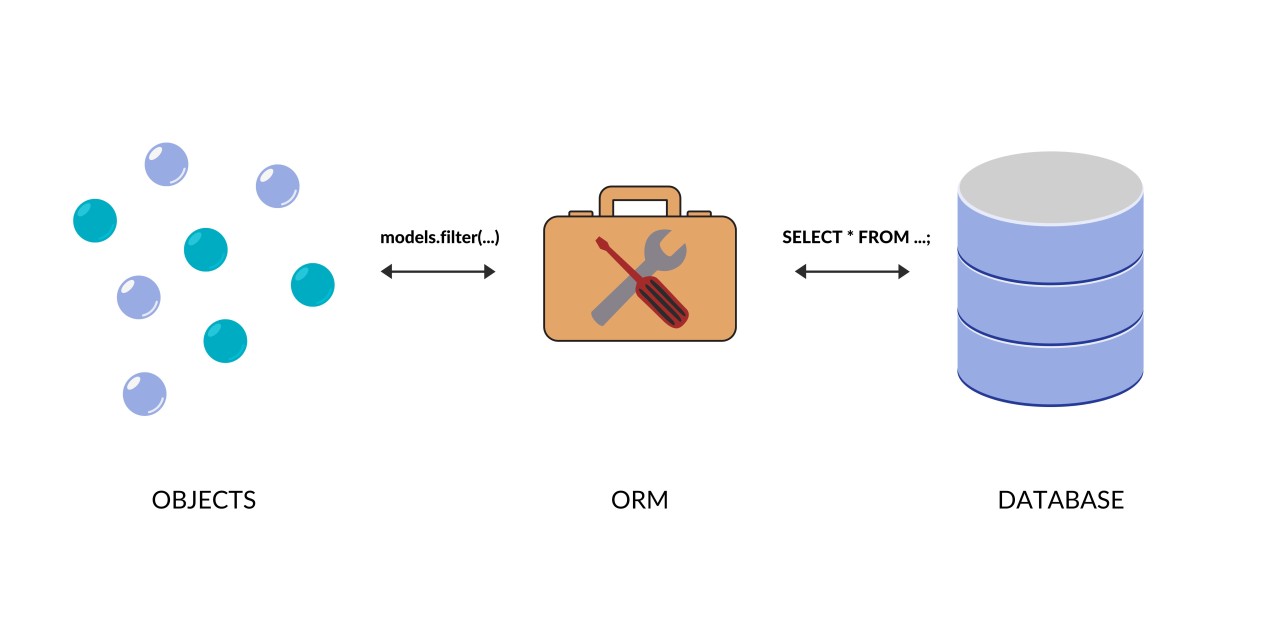
In modern software development, working with databases is essential. Applications need to store, retrieve, and manipulate data in efficient and reliable ways. However, the way developers write code (using objects, classes, and functions) doesn’t naturally align with the way data is stored in relational databases (tables, rows, and columns). This mismatch creates a problem known as the object-relational impedance mismatch. The solution? Object-Relational Mapping, or ORM.
What is ORM?
Object-Relational Mapping (ORM) is a programming technique that allows developers to interact with relational databases using the object-oriented paradigm of their programming language. Rather than writing raw SQL queries to manipulate database records, developers use objects in code that correspond to tables in the database. With ORM, each class in the application typically represents a table in the database. Each instance of the class represents a row, and each class attribute maps to a column. For example, instead of writing:
sql
CopyEdit
SELECT * FROM users WHERE id = 1;
You might write something like:
python
CopyEdit
user = User.query.get(1)
The ORM library translates the object-oriented code into the equivalent SQL query behind the scenes.
How ORM Works
To understand how ORM works, it helps to see the basic mapping process:
Classes → Tables: A class in code represents a table in the database.
Attributes → Columns: Class attributes represent columns.
Objects → Rows: Instances of classes represent rows of data.
Methods → Queries: Functions or methods are used to perform SQL operations like insert, update, delete, and select.
An ORM handles the translation between objects in the application and rows in the database. This includes managing connections, executing queries, and converting results into usable objects.
Benefits of Using ORM
1. Productivity
ORM saves time. Instead of writing repetitive SQL queries, you use high-level methods to interact with the database. This reduces boilerplate code and allows developers to focus more on business logic.
2. Readability
ORM code is often easier to read and maintain. It closely resembles the object-oriented style developers are accustomed to, making the codebase more consistent.
3. Database Abstraction
ORM tools can abstract away the specifics of the underlying database. This allows applications to switch between different databases with minimal code changes.
4. Security
By using ORM, developers can reduce the risk of SQL injection attacks, especially when the ORM automatically handles input sanitization.
5. Maintainability
ORM frameworks often encourage good structure and separation of concerns in your application, improving long-term maintainability.
Popular ORM Frameworks
Several ORM frameworks exist, each tailored to specific programming languages. Some popular examples include:
SQLAlchemy (Python) – Offers both ORM and SQL expression language.
Django ORM (Python) – Integrated into the Django web framework.
Hibernate (Java) – One of the oldest and most mature ORM tools.
Entity Framework (C#) – Integrated with the .NET ecosystem.
Sequelize (JavaScript/Node.js) – Prominent ORM for Node.js and PostgreSQL/MySQL.
ActiveRecord (Ruby on Rails) – Known for its simplicity and convention-over-configuration approach.
Each of these tools provides its own syntax and features but follows the same basic ORM principles.
Drawbacks and Limitations
Despite the many advantages of ORM, it’s important to acknowledge its drawbacks.
1. Performance Overhead
ORM can introduce performance issues, especially when used carelessly. Automatically generated queries might not be as efficient as hand-written SQL.
2. Complex Queries
For very complex queries involving multiple joins, subqueries, or advanced filtering, ORM can be limiting or produce unreadable code. Sometimes, falling back to raw SQL is necessary.
3. Learning Curve
Although ORM simplifies many tasks, learning how to use it effectively requires time. Developers must understand both how the ORM works and the underlying SQL principles.
4. Over-Abstraction
Excessive abstraction can make it hard to understand what’s really happening under the hood, especially during debugging or performance tuning.
Best Practices for Using ORM
To make the most of ORM and avoid common pitfalls, follow these best practices:
Understand SQL fundamentals: Even when using ORM, knowledge of SQL is essential.
Use lazy loading wisely: Avoid unintentional performance hits by managing how data is fetched.
Profile and optimize queries: Monitor database performance and optimize ORM queries as needed.
Avoid N+1 problems: Use eager loading or joins to reduce the number of queries in loops.
Keep logic out of models: Maintain separation between data models and business logic.
Real-World Example
Imagine building a blogging application. You have two main entities: Author and Post.
With an ORM, you might define them like this (in Python using SQLAlchemy):
python
CopyEdit
class Author(Base):
__tablename__ = ‘authors’
id = Column(Integer, primary_key=True)
name = Column(String)
posts = relationship(“Post”, back_populates=”author”)
class Post(Base):
__tablename__ = ‘posts’
id = Column(Integer, primary_key=True)
title = Column(String)
content = Column(Text)
author_id = Column(Integer, ForeignKey(‘authors.id’))
author = relationship(“Author”, back_populates=”posts”)
Fetching all posts by a specific author becomes as simple as:
python
CopyEdit
author = session.query(Author).filter_by(name=”Alice”).first()
for post in author.posts:
print(post.title)
This is much cleaner and more intuitive than managing JOINs manually with raw SQL.
When to Use ORM
ORM is a great choice in most typical web applications or CRUD-based systems. It’s ideal when:You need to develop quickly.
Your queries are not highly complex.
You want to abstract database logic.
You’re working in a team familiar with the ORM library.However, in high-performance systems or heavily analytics-based applications, combining ORM with raw SQL or stored procedures might be a better option.
Conclusion
Object-Relational Mapping has transformed how developers interact with databases. By bridging the gap between object-oriented programming and relational databases, ORM makes development faster, more secure, and easier to maintain. However, it’s not a silver bullet. Understanding its strengths and weaknesses helps developers make informed decisions and build better, more scalable systems.Whether you’re building a small app or a large enterprise system, ORM can be a powerful ally—when used wisely.
RESOURCE: https://revd.digital/orm/